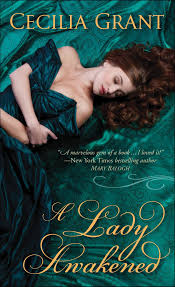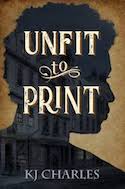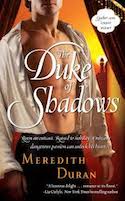Kissing Books: judging the book by its...
Every month, Olivia Waite pulls back the covers, revealing the very best in new, and classic, romance. We're extending a hand to you. Won't you take it? And if you're still not sated, there's always the archives.
A romance cover is not an image, it is a language.
Some years back, fellow author and friend Rose Lerner noticed that the Goodreads page for Cecilia Grant’s awkward-sex masterpiece A Lady Awakened had the wrong cover image attached — instead of teal satin and tumbling auburn locks, it showed a book on medieval history. In Polish. With an Extremely Serious Academic Cover. Delighted, Rose started building academic-style versions of her own book covers; a lot of other authors joined the fun, and the glorious results can be found on this Pinterest board."
The reason this was fun was that academic book covers are in many ways meant to communicate the exact opposite of what you want in a romance. They are meant to look serious, detached, and bear the weight of cultural authority. Romance, of course, is accorded none of those descriptors. It’s not news that women’s books in all genres are more likely to have feminine-coded covers no matter what the text inside says, and romance novels are the most feminized end of the cover-design spectrum. They are notoriously prone to excess: big hair, big muscles, orgasmic expressions, swooning bodies barely draped in clothing that appears to be doing a lot of swooning of its own. Unsubstantiated legend holds that the Technicolor bodice-ripper covers of the 1970s onward were designed to appeal to the men who bought titles for the big paperback distributor networks — which might explain the preponderance of mullets — but that readers came to associate the lurid covers with their romantic content and they bought so many that a marketing feedback loop was thus enshrined. In other words, they learned to read a romance cover.
But no marketing loop stays static forever, and there are now quite a few established genres of romance cover art: classic clinch covers, the headless heroine, the shirtless hero (whose pants often give a clue to his profession, like sports or soldiering), the ballgown that’s almost falling down, the long legs in stiletto heels, the hero holding babies, the tattooed leather-pants-wearing paranormal romance/urban fantasy heroine, and of course that brief wild time in the late 2000s when Fifty Shades-style covers tried to make any black-and-white image look dangerous and sexy and kinky. Tomorrow’s bestsellers will bring new trends, some of which will become fixtures and some of which will fade into history alongside colored page edges and stepbacks.
But aside from the scammers and coat tail-riders the tendency for romance covers to resemble one another is not about confusing readers, it’s about communicating with them. Cover similarities are a promise that the books will contain similar themes, or have a similar emotional impact. Harlequin made its name famous not just by publishing fast, frequent romances but by being absolutely ruthless about cover design — you can spot one from a mile away, and what’s more you know exactly what that design is offering you as a reader. Avon is subtler but no less clear: the first time I saw a Cat Sebastian m/m cover I got excited about two heroes being pictured together, then laughed because I thought some self-publisher or small digital press had borrowed Avon’s cover font (when in fact I hadn’t realized it was an Avon book, their first queer historical). Certain poses convey a great deal of information to a reader: a hero grasping the heroine’s arm from behind, for example, tells you there’s going to be a somewhat fiery, antagonistic dynamic, while two foreheads bumping gently together says the book will skew more sweet and tender in tone.

Let’s look at the cover for A Lady Awakened again, which is both utterly gorgeous and unique and a perfect example of my thesis. First, a description of what we're trying to package. The book is about a widowed country heroine who’s trying to get impregnated quickly so her terrible cousin doesn’t inherit the estate and terrorize the staff (primogeniture is a shit system). She bribes a hot rakish neighbor dude for the procreative sex, because this is a historical and sperm banks haven’t been invented yet. The early sex scenes are famously excruciating: the heroine doesn’t enjoy them in any way, and the hero’s illusions of his own prowess are somewhat painfully shattered. Eventually they fall in love and the sex turns great, but it’s a long, long haul before they get there. So this book cover has a careful line to walk: it has to suggest historical romance to appeal to the market, while warning the reader that it’s going to take a while before we get to the steamy stuff they’re looking for (because otherwise the reader will feel betrayed and this will be reflected in reviews).
We start with swathes of teal satin, hugely improbable in terms of the kind of sheets a country widow would use, but very effective in signaling “historical romance” to a modern reader. The use of teal here is brilliant, because it’s eye-catching but cool — the absence of anything resembling fuchsia is always a strong statement on a historical romance cover. The heroine is lovely, her auburn locks spread out, but notice how her arms are wrapped tightly around herself, and there is no sign of the hero? Notice as well how the colors of the cover shade into almost black, as the heroine keeps her eyes downcast and her expression wary, almost pained. She might as well have EMOTIONALLY CLOSED OFF stamped upon her forehead. This is a long and anxious journey, this cover says, and a keen-eyed reader is thus forewarned when they start the story.
You might think I’m reading into this, or reading this from the perspective of an author and a critic and not a plain reader — except that covers are always part of the conversation in romance. Cover contests and cover reveals are popular forms of promotion. Author Brenda Jackson had readers submit photos they felt would best embody one much-loved character, then tracked down the model depicted and hired him for the shoot. Most of us grew up in times and places when romance wasn’t something we could openly ask for (for safety or shame’s sake), so we learned to scrutinize cover images and cover copy closely for hints, like a hunter looking for deer tracks in the woods. (A word like “destiny” was usually a reliable sign that romance was afoot; “coming-of-age” was invariably a bad sign.) Metadata has made a lot of this easier, but it cannot sufficiently replace the visceral visual impact of a clinch or a clenching set of abs.
The saying that you should never judge a book by its cover hearkens back to George Eliot, and therefore to the days when a shelf of books were all specially bound to match one another so your aristocratic library looked nice and tidy. It's become a sort of rhetorical hammer, banging back the reality that a cover exsists as a way of speaking to the reader outside the bounds of the text. Many moralists don't want readers making choices based on personal inclination, and many authors don't want to think about their communication with the reader as something that's mediated. But when you buy a book you are often trusting it will fulfill the promises the cover has made. When you avoid a book because of the cover, it is often because you don't believe or don't want what the book cover is promising (see: every text-heavy thriller cover that hints at an unreliable narrator, shocking betrayal, and murder).
What readers do when they evaluate a book cover is not judging — it is gambling. So go on. Take the risk.
Recent Romances:

Grumpy Fake Boyfriend by Jackie Lau (self-published: contemporary m/f):
You gotta love titles that do just what they say on the tin. The greatest of these will always be Pregnesia — a book about a heroine who is pregnant and has amnesia — but Grumpy Fake Boyfriend is top-tier in the honesty department. The title makes a promise, and good Lord does the book deliver.
Grumpiness is not something I enjoy in real life, but in fiction some alchemy transmutes it into pure delight. Maybe it adds tension, as the character attempts to resist the joyful arc the book dragoons them into. Maybe it’s because grumpy characters are often blunt, and bluntness is so invigorating in narration. This book has a frank, punchy voice that had me gasping and giggling and screenshotting quotes to send to friends. Will Stafford, the titular grump, is just the right amount grouchy without tipping over into unlikeable asshole territory. He’s hermitish and reluctant and closed-off, though it’s apparent from the start that one reason he keeps those walls in place is because once someone’s on the inside of his heart he has a loyal, caring, generous streak a mile wide. His best friend Jeremy’s one of the ones on the inside, so Will can’t bring himself to say no when Jeremy asks him to attend a weekend lake house party as the fake boyfriend and buffer for his bubbly, bouncy, talkative younger sister Naomi. Whom Jeremy naturally forbids Will from sleeping with. Will doesn’t do relationships — his introversion doesn’t play well with others — so he doesn’t foresee this being a problem. Reader, I snickered, because Will is fucked.
Naomi Kwan is still reeling from a recent breakup and definitely not excited to spend a weekend in the woods with two other couples, including her ex and his brand-new girlfriend. A fake boyfriend is a ridiculous solution — unless the fake boyfriend is Will, who she’s had a crush on forever and who might be fun to take to bed. The arc here is just the right speed for a novella: light bickering leads to a little making out, which leads to a lot more than that, and bam before you know it everyone’s in their feelings. The side characters add just the right amount of drama and keep the world feeling populated. This book is a bubbly, sunny iced drink on a hot day, refreshing and tart and sweet all at once and I’m already halfway through the sequel.
I kiss her again. I softly brush my lips over hers and bring one hand up to cup her cheek, and then I’m kissing her more deeply. Showing her that yes, I do find her attractive. Very much so. She arches against me; she must be able to feel that I’m getting hard. I use tongue this time, too. More than before. “I’m practicing for our act,” I say.
She shoves my shoulder, a smile on her face. “You’re full of shit.”

Unfit to Print by KJ Charles (self-published: historical romantic suspense m/m):
They say that every generation believes it has invented sex. Certainly every generation believe it has invented new types of sex — new debaucheries, new kinks, new ways of getting off. But it just isn’t true. Humans have always been horny, ever since the days our ancestors were slapping handprints and genitalia on cave walls. So when I learned that the latest from author KJ Charles (with whom I now share an agent) was a historical suspense where one hero runs a pornographic bookshop in Victorian London, I was all in.
Men loving men was illegal in Victorian England, you’ll recall, so it’s a perfect milieu for a pair of amateur detectives. One of the challenges in mystery writing is explaining why the police aren’t the ones solving the crime: sometimes it’s because the police are unavailable (every murder mystery that takes place on an isolated island or boat or country house), but other times it’s because the police are not as interested in real justice as the amateur sleuth is (Phryne Fisher is a great example of this). Here, because the crime takes place in the context of gay sex and sex work, contacting the police is riskier than trying to solve the case. Gilbert Lawless is our bookseller, a bastard son whose half-siblings cast him out of the family after their father’s death; Vikram Pandey is a well-heeled lawyer whose upright principles and fierce morality compel him to help other Indian nationals living in London, but also tie him in absolute knots trying to cope with his own desires for men. A disappeared boy and a connection with a murder start the mystery running, and the emotional revelations quickly pile up as the plot forces the two men back into proximity after decades apart. Gil, whose past includes a stint in sex work and who’s always been better at taking pleasure while there’s pleasure to be taken, can’t understand why Vik gets so intense about their past and their entangled present; Vik can’t understand why Gil acts like what they do with one another doesn’t mean anything, and why he shrugs off chances to help other people of their ethnic background. The two have a way of just opening each other up — they are so different, and yet so entwined, and they get to the heart of the conflict so directly. Plus a view into the working-class Victorian world we don’t see often enough in romance. It’s lonely and lovely and a very little bit foxed at the edges, just like a good vintage dirty book ought to be.
Bonus points for a few slang sex terms I haven’t encountered before, but which I’m now going to drop on Twitter at the very next opportunity.
“But one can’t simply say, ‘Fancy sucking’ — you know.”
“One bloody can, in the right company. And yes, since you ask, I do.” Gil gave him an evil grin. “If you can get the words out. I’m not ‘embarking on negotiations pertaining to fellatio’ or whatever, so don’t even try.”
“Proper terminology is important,” Vikram said. “I may have to work up to it.”

Free Fall by Emma Barry and Genevieve Turner (self-published: historical m/f):
In my quest to be the World’s Greatest Expert on Astronaut Romance Novels I have developed a few working theories. For instance: astronaut romances have to emphasize the value of domestic earthbound life, to give the spacefaring hero or heroine something to come back to after the glory and risk of exploration and space travel. I don’t think this is limited to romances, either: Apollo 13, Interstellar, Gravity, and The Martian all hinge plots on whether or not an astronaut can be brought back to loved ones on earth. In earlier books of this excellent series we’ve seen a wary divorcée heroine, an astronaut’s hyper-organized wife, and an admiral’s proper daughter: in Free Fall heroine Vivian Muller is a sorority girl and the cosseted heiress of her defense contractor daddy. Vivy is a different flavor of domestic than we’ve seen before: loud, stubborn, deliberately tacky, funny, and unstoppable. A pistol, one might say, or a real piece of work if one wanted to disapprove. She had no intention of settling down — she only took astronaut Dean Garland to bed for a bit of rebellion and fun. But she ends up pregnant, her dad insists on the marriage to better his chances at landing contracts with the American Space Department (fictional NASA), and next thing you know we have the chattiest, sexpottiest, winged-eyeliner-iest heroine ever hitched to a silent, stoic, unfeeling-but-handsome-about-it astronaut who wants to go to space because it’s the farthest away you can get from another human being. They are incredibly different, drawn to each other because of it, and really, truly terrible at being in a relationship together. Watching them work it out — with strategic lingerie, home telescopes, burned dinner experiments, a puppy, and a heartrending letter at just the right moment — had me sobbing into my sleeve. This is my favorite historical series in romance right now, and we’re about to head into the back half of the series with the moon missions and the lunar lander so now is a great time to get started, if you’re new to the books. I cannot wait.
They’d gone from probably never seeing each other again to being married. The significance of the shift sat between them like a sunning walrus.

From Scratch by Katrina Jackson (self-published: contemporary pan m/bi m/f):
I am sorry I did not see this book when it was hot off the presses last December, but better late than never because this one is really something special. Inclusive ménage romance set in a small town, where all the drama comes from the careful navigation of personal relationships and intimacy? Smoking hot sex scenes, caring hearts, and baked goods? This is someone’s Absolute Catnip and I want them to have the chance to hear about it.
They say time is a river, and this book believes it: the voice is loose and conversational and flows backward and forward from one moment to an earlier then on to the next. We start with curvy heroine Mary, who’s just lost her hateful academic job and decided what the hell, starting over as a baker in a small town looking for a population boost might be a much better fit. She brings donuts to the Sea Port police chief — Miguel Santos, ex-Marine, principled, hot — while he’s having coffee with his best friend the fire chief — Billy Knox, ex-Marine Sergeant, abusive family, uses humor like a shield, also hot. The chemistry of these three was enough to fry an egg on my e-reader. Their attraction to Mary helps reveal the two men’s long-simmering, equally long-hidden attraction to one another, and when Mary confesses that for a solid week she’s been dreaming of having both of them, with her, together — well, it is, as the kiddos say, on. The sex is frank and filthy and sweet all at once, and the emotions are rich and layered and well worth watching. It is just such a damn comfort sometimes to have romance characters who act like adults, even when it’s difficult, even when feeling out a new relationship that the culture doesn’t really have a blueprint for. This book is incredibly light on the conflict — but in a way that feels like a kindness to the reader, which is something I have come to cherish in these trying times. There will always be room in my heart (and in this column!) for pure fluff, served piping hot.
Santos wasn’t an idiot. He knew she wasn’t just talking about Knox, but he needed to hear her say it, because none of this made sense. This was not what good, straight-laced cops and bakers did. Right?
This Month’s Hardcore Historical Who’s Having None Of Your Shit Colonialism:

Duke of Shadows by Meredith Duran (Pocket Star: historical m/f):
Another thing this column always has room for: romances that stare unflinchingly into the void. Because hardened survivor souls need love as much as the tender, trembling ones.
Author Suleikha Snyder has said more than once that this book is one of the best historicals she’s seen set for depictions of British India, and on its ten-year anniversary its power remains intense. It is too vivid a mirror at this moment to read about an angry country at the boiling point, with a terrible event looming in the very near future. Heiress and artist Emmaline Martin survives the shipwreck that kills her family on the way to Delhi only to learn her colonel betrothed is already cheating on her with other officers’ wives. She takes refuge in the garden at a party and meets part-Indian, part-English Julian, Marquess of Holdermann and future duke. Both are frustrated, hurting, and angry, so their flirtation is born as much out of that as out of their undeniable attraction — and they barely have a moment to reflect on what they’re feeling before the Indian Mutiny hits and things go absolutely to eight kinds of hell. What follows is absolutely horrifying, a nightmare of near escapes, murder, sexual assault, mutilation, guilt, and betrayal. We resurface in London: Emma is broken and only barely holding onto her sanity, compulsively painting her worst memories of her escape. Julian thinks she’s dead, until he comes face to face with her at an art exhibition — and realizes her paintings hold a terrible secret. It takes them the rest of the book to work out what they’ve gone through, what they’ve done, and what they mean to one another. My soul bled for them the whole time — especially Emma, whose self-isolation by trauma is one of the most devastating things I’ve ever read in a romance. As for Julian, caught between two cultures violently opposed to one another, he has turned code-switching into a whimsical kind of bitterness that both unsettles and fascinates. Their banter is often uneasy and cutting, but it’s abundantly clear that nobody will ever understand them better than they understand one another. They’re never going to be light-hearted, but they’re so damn strong, and they value each other so deeply, that the HEA is totally, utterly convincing. This is one of those romances that leans into the darkness rather than shutting it out, and is all the better for it — much like the characters it brings to life.
The ocean waited too. It sulked sluggishly beneath the tropical sun; slipping into it would not be so hard. The heat felt like a warm hand pressing on her back, urging her down and away. No trace of the great ship remained; no one surveying these flat, empty waters would suspect what had passed here. No one was coming for her. But her hands would not let go.